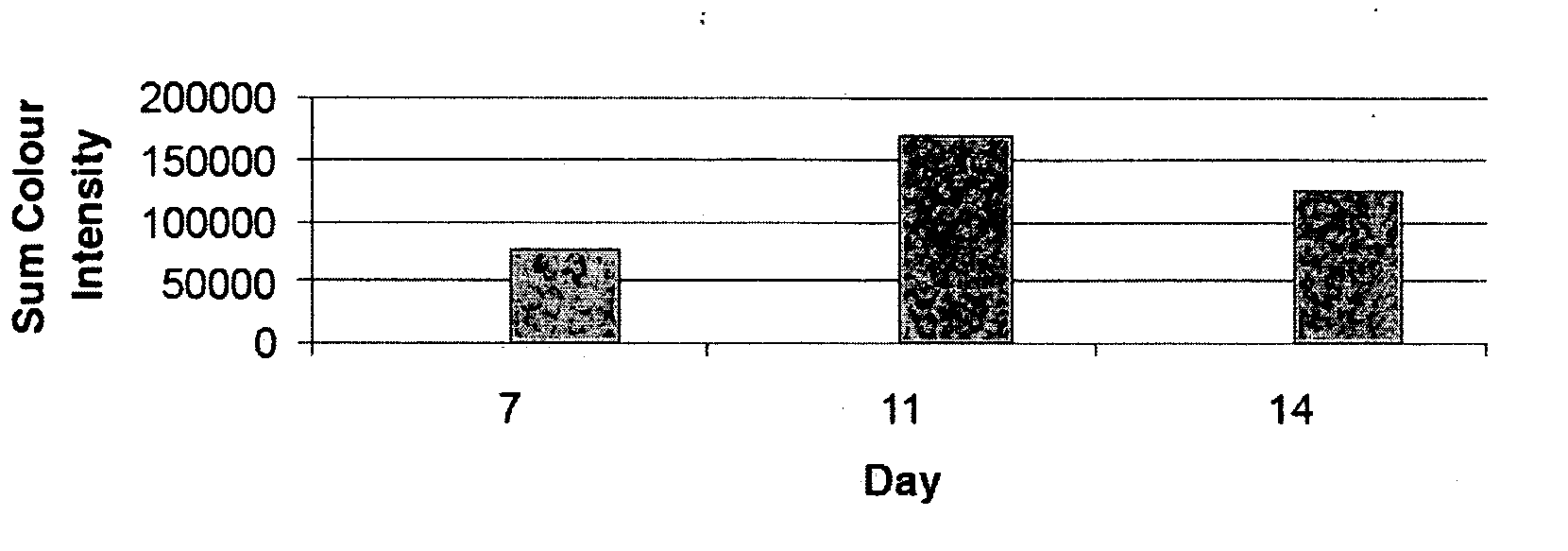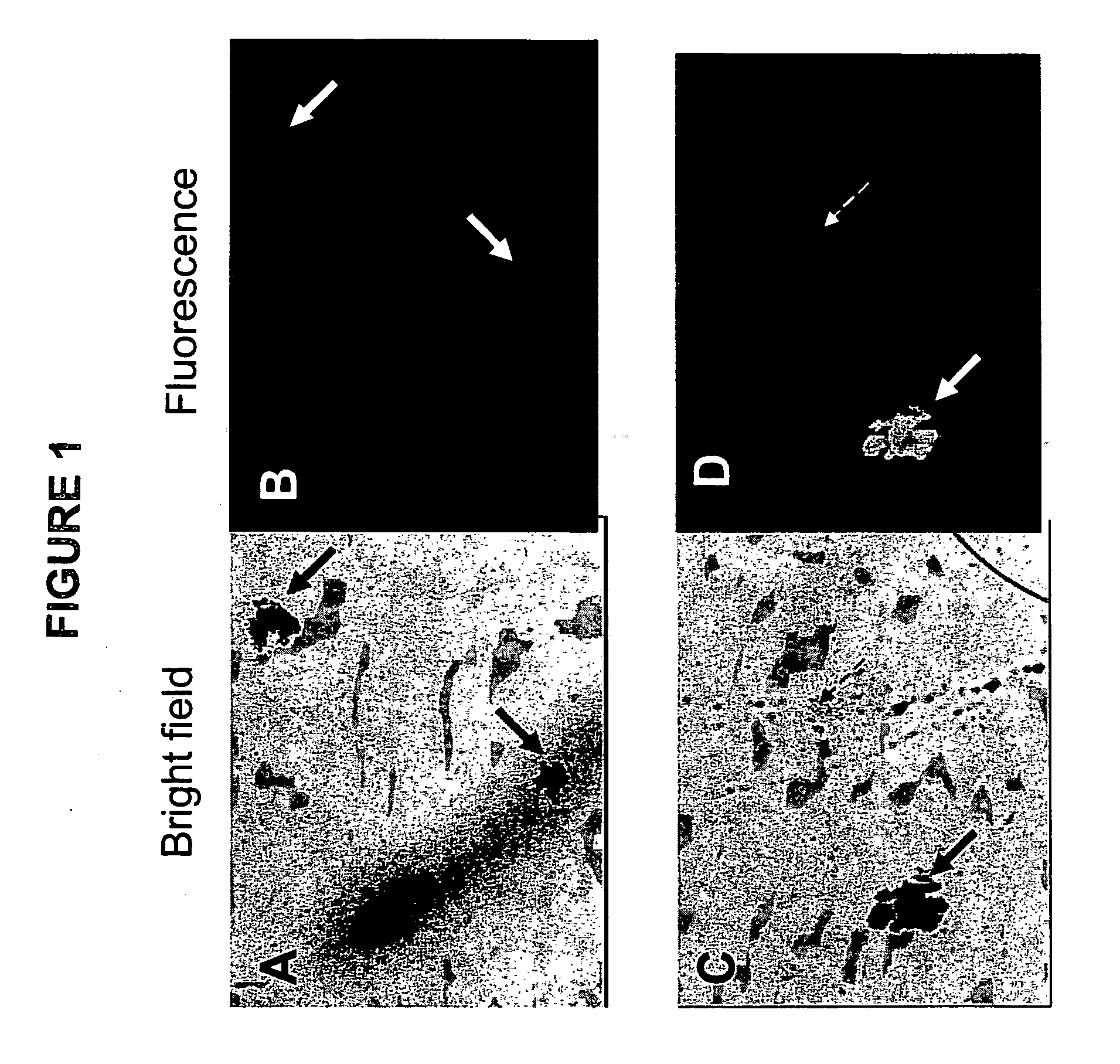Modified colony assay
a technology of modified colony and assay, which is applied in the field of hematopoietic cfcassay, can solve the problems of inexperienced laboratory personnel, inability to distinguish between colony types on the basis of differences in morphology or degree of hemoglobinization, and inability to use existing cfc assay formats to obtain information, etc., to promote the development of one colony type, prevent or suppress the development of other colony types, and promote the development of erythroid
- Summary
- Abstract
- Description
- Claims
- Application Information
AI Technical Summary
Benefits of technology
Problems solved by technology
Method used
Image
Examples
example 1
Preparation of a Standard Hematopoietic CFC Assay
[0065] Human BM, CB or MPB mononuclear cells were suspended in a methylcellulose-based culture medium containing cytokines (MethoCult™ H4434, StemCell Technologies) (StemCell Technologies Methocult™ Flyer; StemCell Technologies 2003 Catalogue pp. 86-125) at a concentration of between 1×104 and 1×105 cells per 1.1 mL of medium. The culture medium was then dispensed into 35 mm culture dishes using 3 mL syringes with blunt end needles, with 1.1 mL of medium per dish. All cultures were incubated for a total of 14 days at 37° C., 5% CO2, 100% humidity. Colonies were enumerated and classified by bright-field microscopy into the following categories based on size and morphology: CFU-E, BFU-E, CFU-GM, CFU-GEMM (StemCell Technologies Colony Atlas).
example 2
Staining of Erythroid Colonies With Fluorescent Antibody Conjugates
[0066] Standard CFC assays were prepared as described in example 1. At the time of plating, 1 to 10 μg of a FITC-conjugated antibody against Glycophorin-A (anti-GpA, catalogue number 10423, StemCell Technologies) was added per mL of medium. GpA is expressed on erythroid cells and is absent on other cell types, including myeloid cells. As a negative control separate dishes were stained in an identical manner with a FITC-conjugated control antibodies against a marker that is not expressed on eukaryotic cells (IgG2b-FITC, catalog number 557701, Becton-Dickinson, San Jose, Calif.). After 14 days of culture at 37° C. the dishes were inspected using an inverted fluorescence microscope. FIG. 1 shows photographs of section of dishes that were inspected at high magnification using either bright field illumination (FIGS. 1A and 1C) or ultra-violet (UV) illumination to detect fluorescence (FIGS. 1B and 1D). The photographs in ...
example 3
Monitoring of Erythroid Colony Development and Changes in Erythroid Antigen Expression During Culture.
[0067] A CFC-assay was set up as described in Example 2. The culture dishes were inspected daily and the fluorescence of selected colonies were imaged at various time points. All microscope and image capture settings were kept constant. Colonies were analysed by densitometry using AnalySIS software (Soft Imaging System Corp., Riverside, Calif.) and fluorescence intensity was calculated for each time point. FIG. 3 shows that fluorescence of an anti-GPA-FITC stained erythroid colony was detectable as early as day 7, reached maximum intensity at day 11 and declined at the end of the culture period at day 14.
PUM
 Login to View More
Login to View More Abstract
Description
Claims
Application Information
 Login to View More
Login to View More - R&D
- Intellectual Property
- Life Sciences
- Materials
- Tech Scout
- Unparalleled Data Quality
- Higher Quality Content
- 60% Fewer Hallucinations
Browse by: Latest US Patents, China's latest patents, Technical Efficacy Thesaurus, Application Domain, Technology Topic, Popular Technical Reports.
© 2025 PatSnap. All rights reserved.Legal|Privacy policy|Modern Slavery Act Transparency Statement|Sitemap|About US| Contact US: help@patsnap.com



